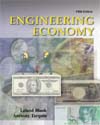Contributed by
Dr. Jeffrey Adler, P. E.- MindBox, Inc.
(formerly of Civil Engineering Rensselaer Polytechnic Institute)
How to use this section: Each exercise requires the development of an Excel spreadsheet. The exercises are keyed to sections in the text Engineering Economy, 5th edition, by Blank and Tarquin. Appendix A of the text is a complete primer for using Excel and the financial functions pertinent to engineering economic analysis. Sample problems are included in this appendix for setting up each function. The spreadsheet exercises presented here are especially well suited to an engineering economy course with laboratory sessions or activities that help a student become more adept with spreadsheet-based solutions. Spreadsheet Exercise #8Benefit/Cost Analysis for Public Sector Projects Exercise Objective: The objective of this exercise is to apply benefit cost analysis for evaluating public projects. Blank and Tarquin Text Reference: Chapter 9 Problem Statement: A city must construct a new bridge. Four proposals were submitted and summarized in the table below. Your task is to help the city determine the optimal project financially.  <a onClick="window.open('/olcweb/cgi/pluginpop.cgi?it=gif::Bridge Proposals::/sites/dl/free/0072432349/22716/ex8.gif','popWin', 'width=621,height=201,resizable,scrollbars');" href="#"><img valign="absmiddle" height="16" width="16" border="0" src="/olcweb/styles/shared/linkicons/image.gif">Bridge Proposals (4.0K)</a>Bridge Proposals <a onClick="window.open('/olcweb/cgi/pluginpop.cgi?it=gif::Bridge Proposals::/sites/dl/free/0072432349/22716/ex8.gif','popWin', 'width=621,height=201,resizable,scrollbars');" href="#"><img valign="absmiddle" height="16" width="16" border="0" src="/olcweb/styles/shared/linkicons/image.gif">Bridge Proposals (4.0K)</a>Bridge ProposalsAssumptions: - Useful Life = 40 years;
- Value of Time = $14/hr;
- Accident Savings = $2500/accident
- Discount Rate = 8%
Part 1: Feasible projects
Compute the benefit/cost ratios of each alternative and determine which are feasible. Part 2: Incremental benefit/cost ratio analysis
Assess the set of projects using the incremental benefit/cost ratio method based on annual worth relations. Order the alternatives by increasing AW of costs. Which alternative (bridge) should be built? | 


 2002 McGraw-Hill Higher Education
2002 McGraw-Hill Higher Education